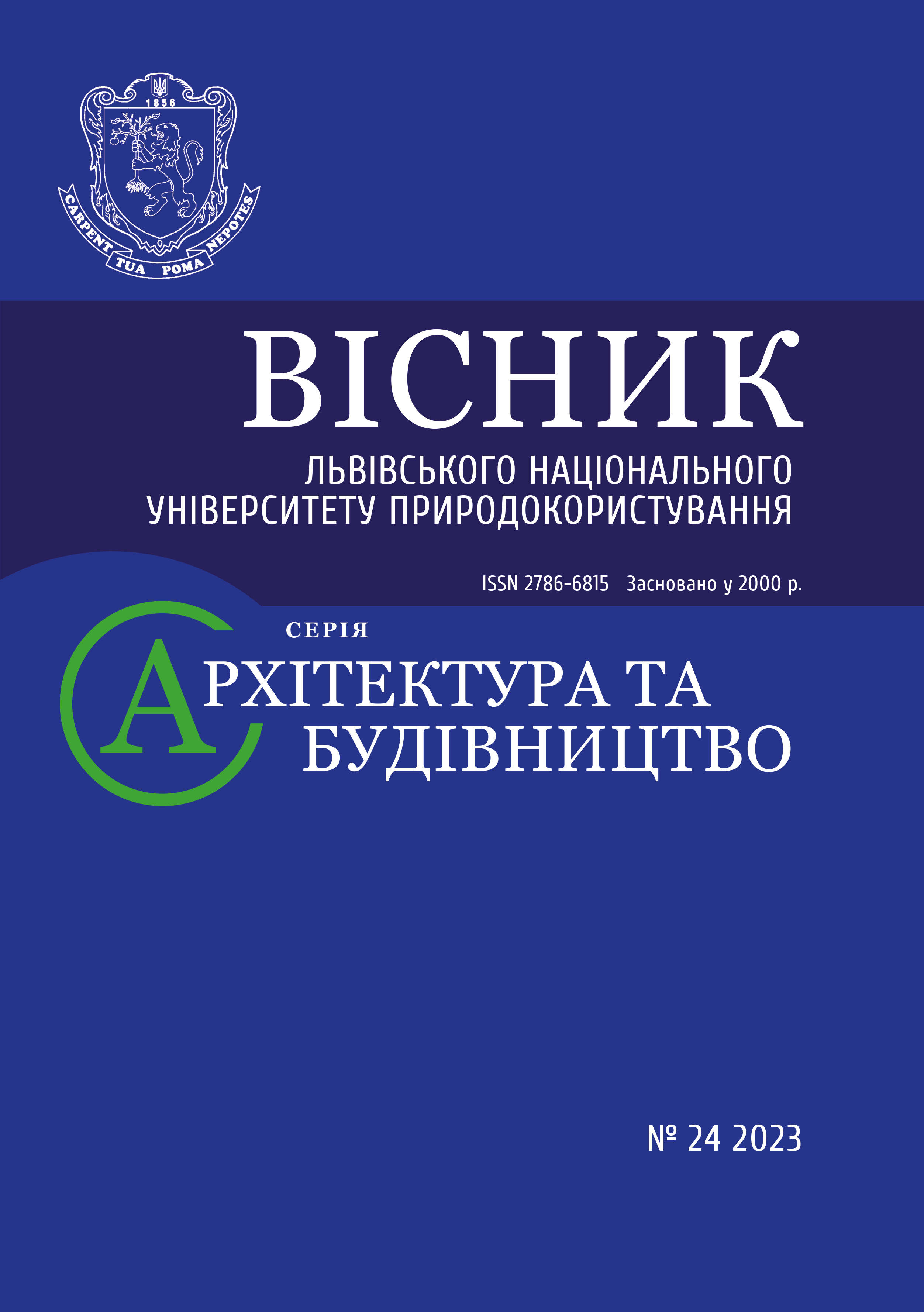METHODS OF THE NEURAL NETWORK INFLUENCE ON THE FORMAL TRANSFORMATIVE EXPRESSION OF ARCHITECTURAL STYLES
DOI:
https://doi.org/10.31734/architecture2023.24.113Keywords:
innovative construction, neural networks, artificial intelligence in construction, architectural style, design, hybridization of architectural styles, act of neural networks on constructionAbstract
The potential impact of neural networks on optimizing the design processes in the construction industry cannot be exaggerated. The article analyzes the use of neural networks for creating and processing details and features of architectural and construction styles, particularly functional and hi-tech styles, through the transformative expression by using neural networks.
Neural networks (hereafter NNs) have the potential to revolutionize the industry of construction and architecture by providing faster, more efficient, and more accurate processes in generating architectural elements and concept art. The NNs can be used for design optimization, enhancing design proposals, planning and construction by analyzing large volumes of data and determining the most economically viable engineering solutions.
The use of neural networks can result in improved productivity in the construction industry. Today, NNs can be applied to analyze various architectural styles using images, generating design iterations based on them. This analysis can help engineers, architects, and designers to better understand the defining characteristics of different styles and apply them in their own projects. Incorporating neural networks in the design optimization process significantly enhances productivity and accuracy. These options can reduce costs of the design and additional design services.
The interaction between NNs and information modeling opens new possibilities for improving planning, coordination, and construction management processes. These advantages contribute to error reduction, enhanced accuracy, and decreased project execution risks, which are crucial for successful implementation of construction tasks in the modern world. The continuous advancements in neural networks and their application in construction hold the promise of transforming the industry, fostering innovation, and shaping the future of architectural design and construction practices.
References
Architects can rest easy that AI isn't coming for their jobs just yet. (2022, November 16). Dezeen. URL: https://www.dezeen.com/2022/11/16/architects-ai-dall-e-midjourney-opinion/ (Last accessed 1 April, 2023).
Ballenger G. What Happens When an A.I. Program Tries to Write Poetry? Slate. 2017. URL: https://slate.com/technology/2017/07/what-happens-when-an-a-i-program-tries-to-write-poetry.html (Last accessed 1 April, 2023).
Barandy K. Interview with Kory Bieg on text-to-image generators & the future of AI in design. URL: https://www.designboom.com/design/interview-kory-bieg-text-to-image-generators-future-ai-design-08-17-2022/ (Last accessed 6 April, 2023).
Berg N. AI tools like DALL-E 2 and Midjourney are helping architects - and their. 2022. URL: https://www.fastcompany.com/90780871/ai-tools-like-dall-e-2-and-midjourney-are-helping-architects-and-their-clients-design-new-buildings (Last accessed 20 April, 2023).
Brown T. B., Mann B., et al. Language models are few-shot learners. NIPS. 2020. No 33. P. 1877–1901.
Davy Tsz Kit Ng, Jac Ka Lok Leung, Kai Wah Samuel Chu, Maggie Shen Qiao. AI Literacy: Definition, Teaching, Evaluation and Ethical Issues. 84th Annual Meeting of the Association for Information Science & Technology. 2021. No 58. P. 504–509. DOI:10.1002/pra2.487.
Florian M. C. Can Artificial Intelligence Systems like DALL-E or Midjourney Perform Creative Tasks? |ArchDaily. 2022. URL: https://www.archdaily.com/987228/can-artificial-intelligencesystems-like-dall-e-or-midjourney-perform-creative-tasks (Last accessed 20 April, 2023).
Goodfellow I. J., Pouget-Abadie J., Mirza M., Xu B., Warde-Farley D., Ozair S., Bengio Y. (2014). Generative adversarial nets. Advances in Neural Information Processing Systems. 2014. No 3 (January). P. 2672–2680. DOI:10.3156/jsoft.29.5_177_2.
Jaruga-Rozdolska A. Architektura 4.0: proces projektowania wspierany przez sztuczną inteligencję. Potencjał wykorzystania skryptu generatywnego MidJourney w procesie tworzenia koncepcji architektonicznej. BUILDER. 2022. No 303. P. 66–69. DOI:10.5604/01.3001.0015.9893.
Jaruga-Rozdolska A. Artificial intelligence as part of future practices in the architect's work: MidJourney generative tool as part of a process of creating an architectural form. Architectus. 2022. No 3 (71). P. 95–104. DOI:10.37190/arc220310.
Ng T. K., Leung J. K. L., Chu K. W. S., Qiao M. S. AI literacy: Definition, teaching, evaluation and ethical issues. Proceedings of the Association for Information Science and Technology. 2021. No 58 (1). P. 504–509. DOI:10.1002/pra2.487.
Ploennigsb J., Bergerb M. AI Art in Architecture. Computer Science. ArXiv. 2022. DOI:10.48550/arXiv.2212.09399.
Radhakrishnan M. Is Midjourney-Ai the New Anti-Hero of Architectural Imagery & Creativity? Global Scientific journals. 2023. No 11. 94–104. DOI: 10.11216/gsj.2023.01.102270.


